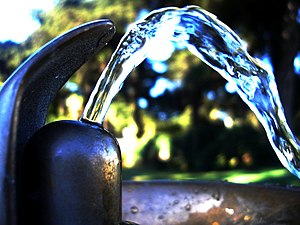May 5-11 is National Drinking Water Week— as the EPA does their part to involve citizens and promote drinking water protection, consider source water in Colorado. As a headwaters state, we’re responsible for the water that nourishes 19 states and Mexico, plus we take pride in the quality of our water and the snow that falls to melt into water (isn’t that what the ‘Tap the Rockies’ campaign tapped into?).
As we wrote in the Winter 2013 issue of Headwaters Magazine,
Protecting the source of a water supply can be both personal and a matter of public health.
Source water protection work is in progress across Colorado, but looks different depending on the locale. Activities range from addressing nonpoint sources of pollution such as farm fertilizer runoff or contamination from roads, to reducing access to reservoirs or promoting forest health.
Grand Junction developed a watershed protection ordinance in 2007 after Genesis Gas and Oil acquired leases to drill within the Plateau Creek watershed on the Grand Mesa, a source of the city’s water. Residents were concerned about the potential impacts of drilling– particularly hydraulic fracturing– on their drinking water supply. To deal with these concerns, stakeholders including the cities of Grand Junction and Palisade, Genesis, federal land managers and local citizens came together, agreeing to a set of best management practices once drilling began. Genesis has avoided developing its leases within the watershed so far. In the meantime, Grand Junction is funding a water monitoring study to establish a baseline for the quality of its water.
Monitoring is something Colleen Williams, source water protection specialist with the Colorado Rural Water Association, frequently recommends to the water utilities she works with. By establishing a baseline for water quality, communities can track what is showing up in their water over time and watch for red flags. “It’s really important to have some way that they would know that there is a problem in that water source,” says Williams.
Some communities face concerns about oil and gas drilling, others with abandoned mine drainage or septic tank maintenance. Then there’s fire and drought– two of the biggest concerns, Williams says. Fortunately, much of Colorado doesn’t have contaminated water, she adds. A lot of the focus is on prevention– keeping water clean in the first place is far more cost-effective.
Williams also recommends public outreach and information sharing: “We want the community to encourage everyone to become a stakeholder, to become a steward of that drinking water source.”


 Print
Print